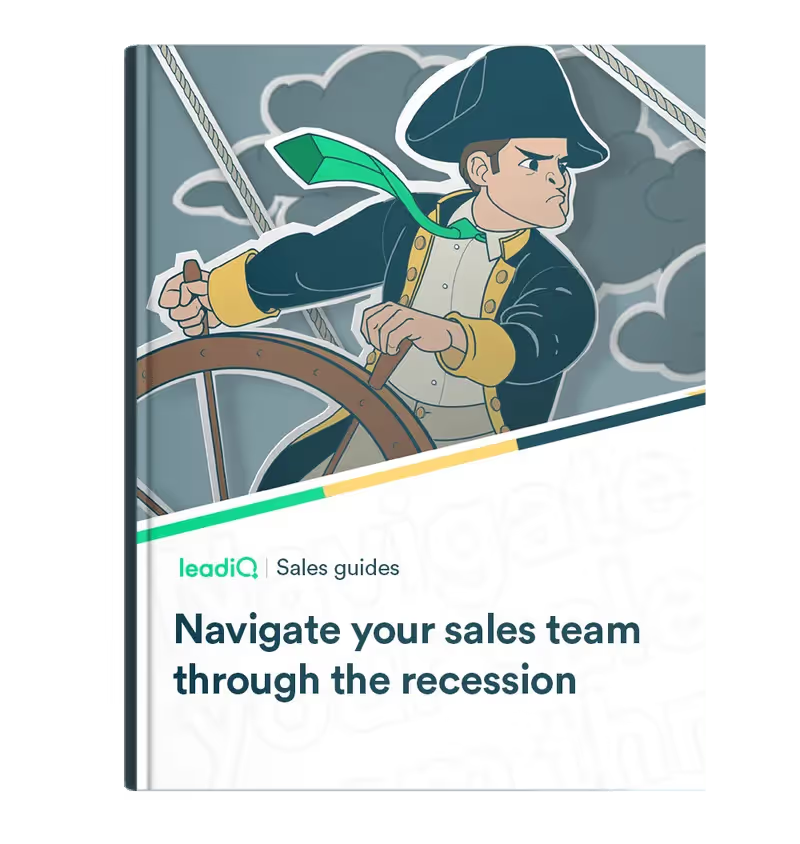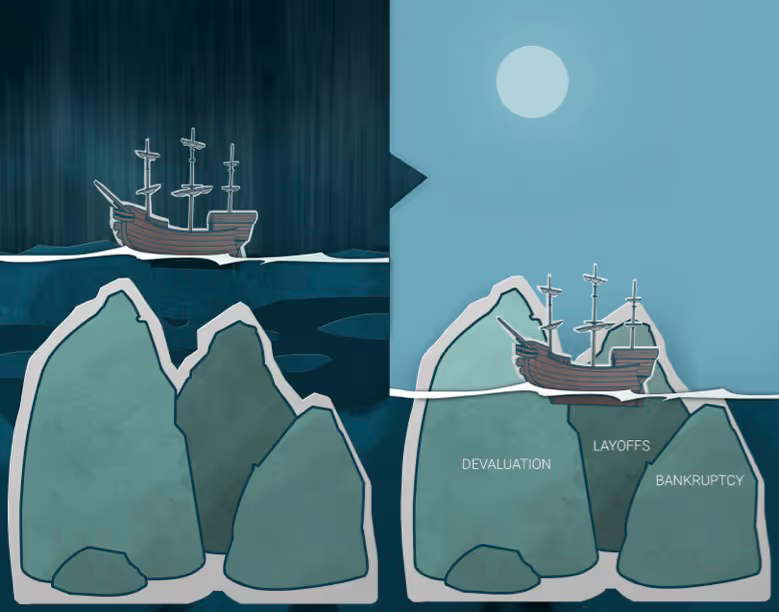Ready to create more pipeline?
Get a demo and discover why thousands of SDR and Sales teams trust LeadIQ to help them build pipeline confidently.
Understand software's current predicament, identify adjustment strategies, and develop ways to protect your sales team from the chaos.

How to keep customers
Current customers are 5x less expensive to keep than new ones are to gain. Sales can help drive customer retention by keeping in touch with contacts for cross-sell or up-sell opportunities.

How to identify proven adjustment strategies
The average sales team uses 9 applications to book a meeting. LeadIQ trims the fat to capture ideal customer profiles, connect applications to refresh data, and prioritize actions based on sales triggers.

How to find new prospects
Cold email and cold call success rates are even lower in economic downturns. McKinsey says, "companies that excel at personalization drive 40% more revenue than average players." See how your team can drive more revenue by personalizing outbound at scale.





Get a demo and discover why thousands of SDR and Sales teams trust LeadIQ to help them build pipeline confidently.
In 2021, an unprecedented amount of money surged into the software market, submerging perilous obstacles and boosting businesses.
But now, as capital recedes, dangers appear.

Only a few years ago, there was strong GDP growth, low inflation, and record low unemployment.
But then...
COVID ended the longest economic expansion on record. State and local regulators shut down the economy and issued stay-at-home orders for vast swaths of the population.
Consequently...
Consumers spent more time online, and companies exchanged their office space for remote workforces.
This digital transformation of work was a boon for software as a service (SaaS), expecially as work and life habits hardened.
Therefore...
Software investment was a good bet, and the market responded with a flood of cash ($621 billion in 2021).
However, a grow-at-all-costs mentality provoked a weakening of financial discipline.

Until finally, an unwelcome series of tremors shook the market – increased money supply, proliferation of subsidies, punitive fossil fuel policies, war in Ukraine.
This maelstrom continues to drive record inflation, increase the cost of living, decrease personal savings, and spike energy costs. B2B operations and profits are harmed in the fallout.
Furthermore, regulators exhausted stimulus measures during COVID, leaving few to new policy remedies.
Fintech company Klarna was valued at $45.6 billion in 2021. One year later, thanks to credit defaults from cash-strapped customers and a rise in operating costs, Klarna's value fell to $6.5 billion. That 85% drop was an alarm bell for investors. Silicon Valley investment firm, Y Combinator, began advising startups to "plan for the worst." Sequoia Capital, another influential venture capital firm, urged businesses to cut costs and preserve cash to survive.

With money low, some companies are scraping the bottom. Others will run aground before the recession is over.
But we've seen it before. Harvard Business Review scrutinized the recessions from the 1980s, 1990s, and 2000s and showed that difficult times separate the wheat from the chaff.
85% of growth leaders topple during a downturn. 17% of companies don't survive. 80% do not return to pre-recession growth rates three months after a recession, and 40% do not return to previous absolute sales and profit levels.
Knowing the high stakes of failure, companies are pivoting fast from yesterday's business model, giving sales departments whiplash.
What next?
The current recession calls for all hands on deck. If you're a sales leader, your request for tools, time, or money will most likely need to align with a broader recession strategy.
The most common strategies fall into three simple categories:
You may need to appeal to one or all of these approaches.

Your company wants to end the recession with at least as much money as it started with. That means increased financial discipline. Debt can slow progress and sink your business.
It's far better to stay buoyant by retaining customers. Current customers are famously 5 times less expensive to keep than new ones are to gain. Consequently, investment dollars last longer when you increase customer loyalty (you also get more referrals and cross-selling).
Churn levels are closely tied to valuation. For instance, strong companies like Box trade at 3x their annual revenue, but Slack and Zoom trade at 40x their yearly income.
Why? Because they have less than 1% churn. Predictable repeat business secures a company's long-term financial health.

Customer retention isn't just Customer Service's exclusive problem. Sales can help plug customer leaks by keeping in touch with contacts for cross-selling or up-selling opportunities.
To manage these connections, consider a platform like LeadIQ that sends alerts when executive sponsors change jobs or positions. Find fresh stakeholders to stabilize current accounts. Pursue new contracts with previous sponsors. Constant diligence is required to keep your company buoyant.

With fewer dollars to go around, you need to streamline your processes. Think of it as throwing out unnecessary cargo to lift your company and reduce drag. Even small changes can yield big results. Bain Capital encourages sales teams to navigate a recession by "sweating the details" of daily execution. They recommend trimming the number of administrative tasks so sellers can spend more time with customers.
Look for signs of operational bloat. For example, did you know the average sales team uses nine applications just to book a meeting? Great Blackbeard's Ghost! That's a lot. A platform like LeadIQ can help you trim the fat to efficiently capture ideal customer profiles, connect applications to refresh data, and prioritize actions based on sales triggers. Efficiency boosts like these not only save money immediately but also increase profitability post-recession.
You can buy time during this recession by retaining customers and streamlining operations, but to sail out of the shallows, you must harness new customers. In good times, cold email success rates are less than 1% and cold calls break through only 3% of the time. What are the success rates in a contracting economy where businesses have less money to spend? (Even worse.)
So, is there hope?
Yes, the hope lies in strategic personalization.
McKinsey states that "companies that excel at personalization drive 40% more revenue than average players." Furthermore, they warn that "Non-personalized communications pose a business risk in a low-loyalty environment (our's)". Forrester concurs, asserting that personalization is "no longer a nice-to-have, but a necessity for B2B."
Effective prospecting requires sending the right messages to the right prospect at the right time. Investigate opportunities on LinkedIn, compose a message that acknowledges the prospect's uniqueness, then smoothly transition to your value proposition. End with a call to action (CTA). This level of personalization provokes better responses but demands more time and writing expertise. There are two approaches to achieving this type of personalization:
Move your company into deeper waters. Personalization is the proven way to hoist the sales! (See what we did there?)
Navigate your sales team through this recession with a renewed focus on fundamentals. Remember to keep afloat, lighten the load, and unfurl the SALES (did it again)! LeadIQ can help.
Bon Voyage!